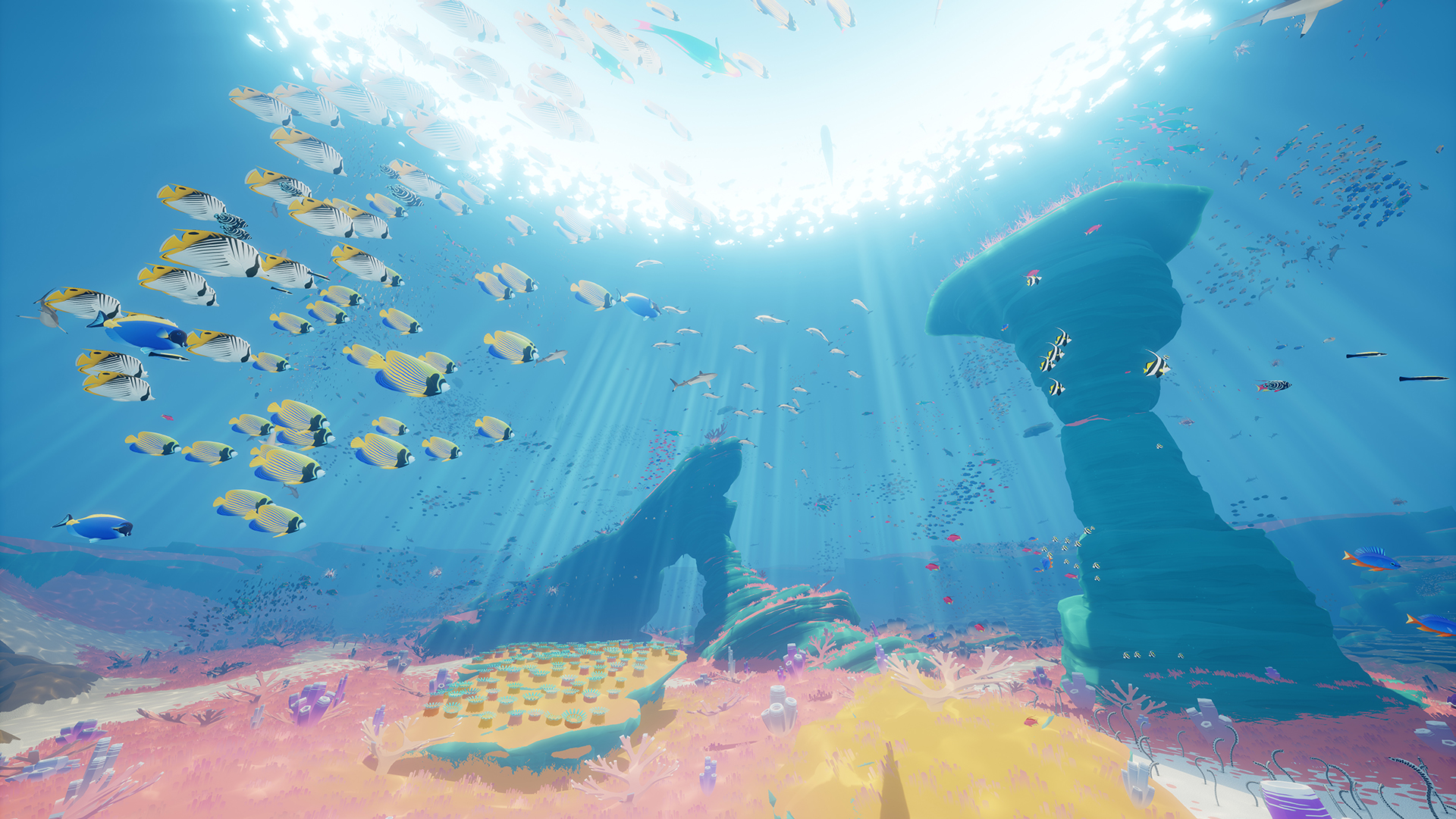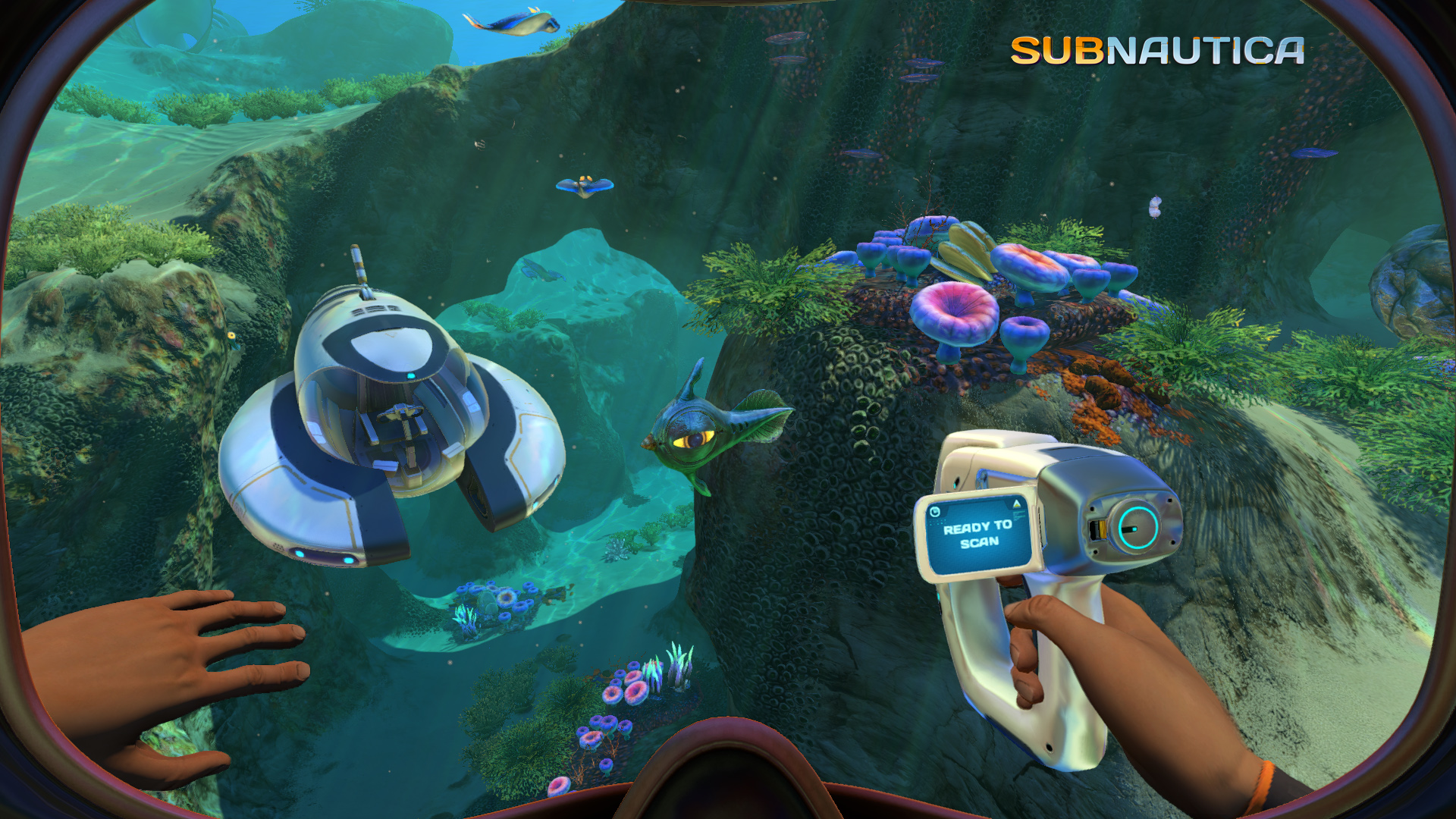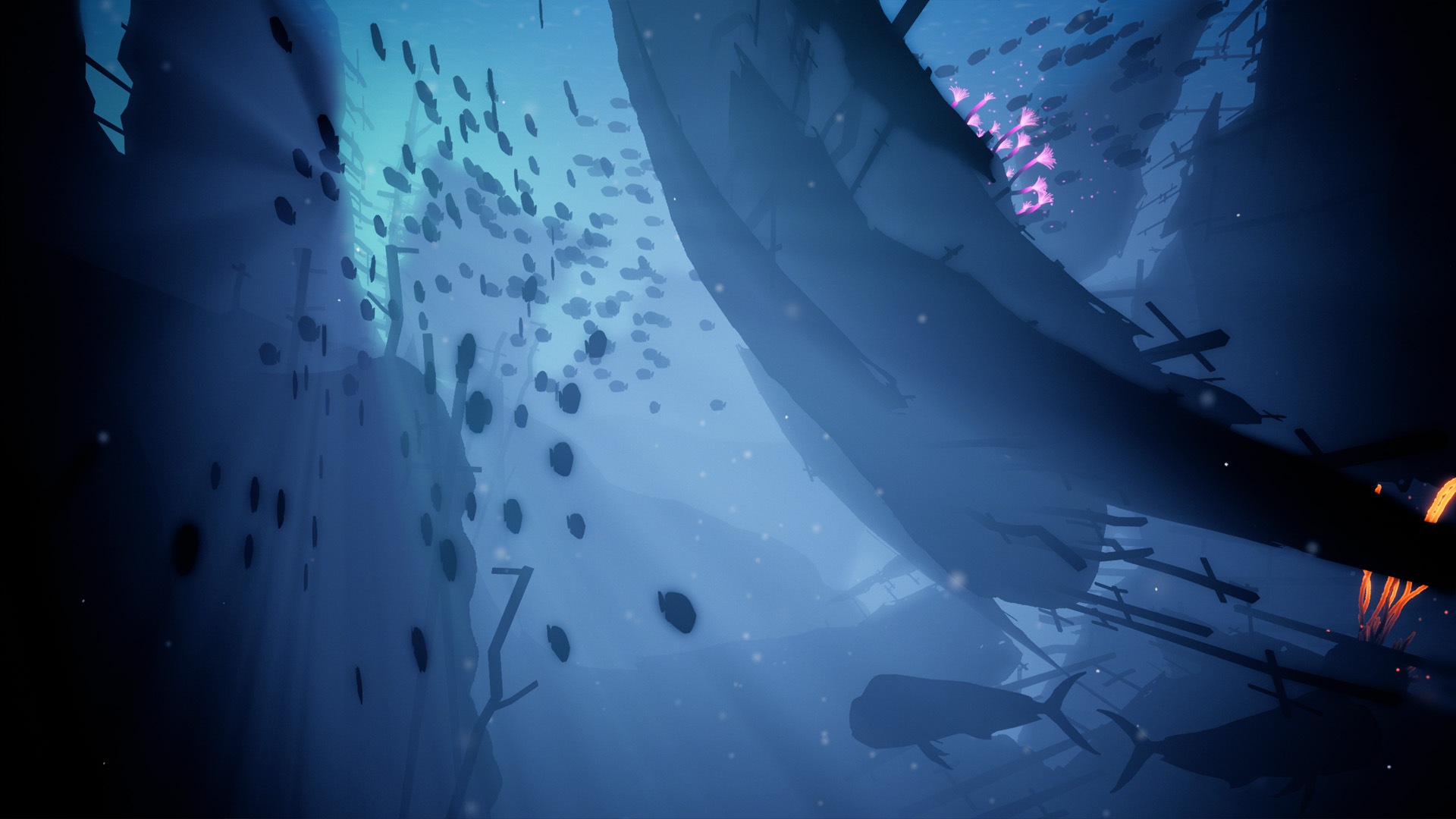Postscript is Cameron Kunzelman's weekly column about endings, apocalypses, deaths, bosses, and all sorts of other finalities.
Our planet’s ocean is experiencing the massive catastrophic event of global warming along with the rest of it. Creatures with shells and the animals that rely on them further of the food chain are being brutalized by acidification. Locations where agricultural runoff has deoxygenated the water and eliminated life in the area, so-called “dead zones,” proliferate across the planet. A general warming is destroying coral worldwide, and bewildering the animals who live in the water. The creeping death approaching the oceans of the world is so massive and complicated that it is, apparently, more efficient to study the things that are managing to eke out an existence rather than analyzing why things are dying.
You wouldn’t know this by looking at the games we create that center on oceans. If you want to experience some thoughts about the nature of war, you can see a plurality of opinions: Battlefield 1’s opening sequence where death after death piles up in a wasteland sells you on the tragic necessity of it and Call of Duty: Advanced Warfare shakes its head shamefully at the idea that this might be the way forward. Everybody’s Gone To The Rapture and Papa & Yo give two very different perspectives on trauma and how one might work through it. We even have a burgeoning plurality of examples of games that with different approaches to climate change in a general sense, from Civilization VI: Gathering Storm’s solution-oriented angle to Lichenia’s abstracted meditation to Eco’s simulationist world maintenance.

And yet while we have lots of games that focus on the ocean, either on our planet or others, we don’t really have many games that center on the horror of what’s happening to it. I don’t mean some kind of panicking, alarmist game that asks you to understand the tragedy of dying whales (even though this is alarming and also accelerating). I mean this on a more practical level. The nightmare that is happening to our oceans seems right out of a terrifying science fiction story: There are pockets of this world where farm runoff creates massive fungal blooms, a vast explosion of life, that saps the water of oxygen and leaves nothing but oxygenless dead water behind as it sinks to the sea floor. An asphyxiating dead zone remains. There are pockets of this world where nothing can breathe, and in a few hours these places can bloom with algae and fungus that overwhelms anything inside of it. It’s slowly getting hotter, creatures from the wholly different universe down deep are erupting into the shallower ecosystems to prey and consume, and the food chain is constantly interrupted by famine.
It’s an apocalyptic time down there, but it seems like the oceanic focus of games is always one of two things: wonder or surprise.
In the category of wonder we have the Endless Ocean games, FarSky, and Abzu. These games take us down into the depths to show us the wonder of this strange landscape that so few of us experience in any real way. The challenges are different than our terrestrial ones, but darn it, overcoming them are just as good in the coral-wrapped, kelp-forested world beneath the waves. This is a similar ethic to those games that place us right at the top of those waves: Salt, Sea of Thieves, Raft, Submerged, and the others. These games give us wonder in front of us paired with an ever-present danger from below. It’s like we’re always hanging by the thinnest thread.

Subnautica uses the divide between wonder and surprise to generate its unique blend of diving fun and pelagic paranoia. In taking you from a shallow-diving scavenger to a deep-sea explorer, Subnautica uses that transition to move from the wonder of weird sea creatures and objects to the dark ocean full of creepy crawlies that could swoop in at any moment to get you. There’s a reason for the huge number of “ Subnautica is actually a horror game” videos on YouTube, but I’d caution a pause before taking it that far. Rather than being paced or framed as a horror game, it is simply one that gets you there via the contexts it puts you in. Being at the bottom of the ocean is frightening simply by virtue of where you are and the conditions you’re having to exist in. The scary part of the ocean’s depths is that anything could be out there. You could get surprised by something wholly unplanned for, and I think it’s no mistake that Subnautica was initially planned as a game that takes place in space.
Go down deep enough and the ocean might as well be another planet. The BioShock series proceeds from that initial point, as does Soma. They’re both places that can be populated by your most terrible nightmares. Just like in space, no one can hear you scream, and if you take one step out of the safety of the airlock in either place you’re going to die (in extreme pain, most likely). The bottom of the ocean flips wonder into terror. It’s the world of the vampire squid, after all, and their heaven is our hell.
It seems like all of these games leave a lot on the table by focusing on this dual nature of oceans. In their pursuit of James Cameronian sublime awe and terror, they miss those realistic features of acidity and death I mentioned above that, even if you ripped them right out of our reality, would cause players to recoil in confusion and horror. The games that do try to address these problems, like Koral, an educational game that informs you about coral reef death and tasks you with reinvigorating the sea floor, have to do them through a single spectacular lens as if the coral were something uniquely damaged about the sea. The real disturbing thing about the oceans is that they aren’t all that different from the land at all. They can still be decimated in their totality. They still die. They die just like we do.

Strangely enough, one of the places that I’ve seen this work done in interesting ways is in the tabletop gaming space, specifically the Dungeons & Dragons adventure book Ghosts of Saltmarsh. While I was reading it for my own D&D campaign, I came across an appendix that features “ocean environs” that, although they use magic and fantasy concepts, feel like they allegorize the reality of oceans much better than other games manage to. “Sapping snow,” a magical hazard featured in Ghosts of Saltmarsh, is a vast seafloor cover of necrotizing material that operates much like the algae death layers that produce dead zones. Magic storms with exploding meteors ironically manage to feel more like our “real” superstorms than the relatively idyllic worlds of ocean games do.
It could be that fantasy and science fiction, via what Darko Suvin called cognitive estrangement, can simply do a better job of showing us our world than anything attached to realism does. But I’m holding out for the oceanic game that tackles the specific problems there, and I’d encourage everyone taking players down deep to go beyond the oceans we have to find oceans we need.
You can follow Cameron Kunzelman on Twitter. If you’re making a cool game about the ocean, please let him know.
Have thoughts? Swing by the Waypoint forums to share them!
from VICE https://ift.tt/2XCTrcz
via cheap web hosting
No comments:
Post a Comment